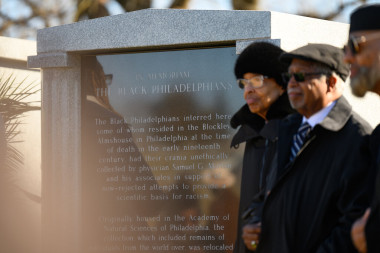Amid a Fraught Process, a Philadelphia Museum Entombs Remains of 19 Black People
Skulls from a collection used to further racist science have been laid to rest. Questions surrounding the interment have not.
There was very little that could be said about the 19 people who were eulogized on Saturday morning in a service at the University of Pennsylvania. Their names were lost, and not much about their lives was known beyond the barest facts: an old age spent in the poorhouse, a problem with cavities. They were Black people who had died in obscurity over a century ago, now known almost entirely by the skulls they left behind. Even some of these scant facts have been contested.
Much more could be said about what led to the service. “This moment,” said the Rev. Jesse Wendell Mapson, a local pastor involved in planning the commemoration and interment of the 19, “has not come without some pain, discomfort and tension.”
On this everyone could agree.
The University of Pennsylvania Museum of Archaeology and Anthropology, like cultural and research institutions worldwide, has been grappling with a legacy of plunder, trying to decide what to do about artifacts and even human bones that were collected from people and communities against their will and often without their knowledge.
…
In the early and mid-19th century, Samuel George Morton, a Philadelphia physician and naturalist, amassed one of the largest known collections of human skulls in an effort to bolster an influential but scientifically bogus theory of racial hierarchy. Like many physicians and medical students of his time, he looted the cadavers of the poor and mentally ill from the city’s almshouse.
The collection continued to grow after Morton’s death in 1851 but was largely forgotten along with his odious theories. In 1966, the bones were transferred to the Penn Museum, where they remained for decades, some sitting on a classroom shelf, visible through a window to anyone waiting at the nearby bus stop.
